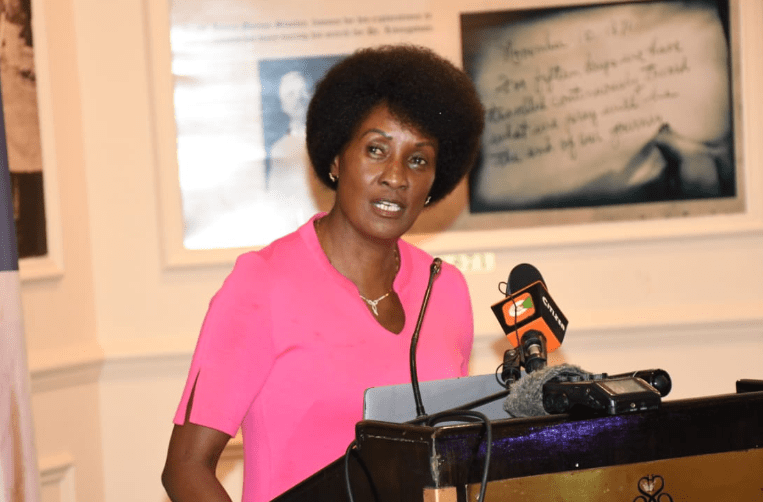Revolutionising education system using AI

On Wednesday, 16th April 2025, Kenya took a major step toward educational transformation when the Cabinet Secretary for Information, William Kabogo, appeared before the Senate plenary and announced that the government is preparing to incorporate Artificial Intelligence (AI) into school learning.
CS Kabogo informed the nation that a partnership with the European Union (EU) is already underway to develop a comprehensive policy on the use of AI in education. He acknowledged that AI has already become an integral part of human interaction in everyday life and stated that his ministry is actively working with the Communications Authority to integrate AI into the national school curriculum. But what does incorporating AI into our classrooms really mean, and how prepared is the country to embrace this technological shift?
Global shift to AI in education
Globally, the education sector is witnessing a technological revolution. Countries such as China, the United States, Finland, and Singapore have embraced AI-driven learning systems to personalize education, optimise classroom management, and improve outcomes.
The World Economic Forum projects that AI could dramatically reshape how students learn and teachers teach by 2030. In Kenya, where challenges like teacher shortages, overcrowded classrooms, and disparities in learning resources are prevalent, the integration of AI into schools is both timely and necessary. The country stands at the threshold of an opportunity to close educational gaps and better prepare students for the demands of the 21st-century workforce.
Understanding AI
Artificial Intelligence, commonly known as AI, refers to machines or software systems designed to mimic human intelligence. These systems are capable of performing tasks that typically require human thinking, such as learning, reasoning, problem-solving, and decision-making. Chat GPT is just one of the many AI applications. Within the education sector, AI is increasingly being used world over, to improve both teaching and learning processes.
One significant application is in smart tutoring systems, which offer students personalised feedback and guidance based on their individual performance. AI also facilitates automated grading of assignments and exams, allowing teachers to save valuable time while maintaining consistency in evaluation.
Further, AI powers personalised learning platforms that adjust instructional content and pace to suit the unique needs of each student, promoting more effective learning. Another important use of AI is in virtual teaching assistants, which handle routine administrative tasks like scheduling, communication, and student support. By integrating these technologies, schools can not only enhance student engagement but also boost the efficiency and effectiveness of teachers and administrators alike.
Why AI matters
Kenya’s school system faces persistent challenges, including a high student-to-teacher ratio, especially in rural and marginalized areas. AI offers a scalable solution to bridge this gap by supplementing the role of teachers with intelligent systems that offer real-time feedback and personalised learning experiences.
Also, the country is in the process of fully implementing the Competency-Based Curriculum (CBC), which emphasises individualised learning pathways, critical thinking, and problem-solving skills. AI can support CBC by enabling adaptive learning platforms that align with each student’s strengths and learning pace. Additionally, AI integration will promote digital literacy among students—an essential skill in the global job market. As the world moves toward a digital economy, Kenya cannot afford to be left behind. Equipping learners with exposure to AI from an early stage will help future-proof the workforce.
Current initiatives
The Kenyan government has already made significant strides toward digital learning. Initiatives such as the Digital Literacy Programme (DLP) have introduced tablets and laptops in some primary schools. AI offers the next step in building on this digital foundation.
Partnerships with private sector players and EdTech startups are also playing a crucial role. Some Kenyan universities and technical institutions are piloting AI-driven platforms to improve academic performance tracking and student engagement. International organisations like UNESCO, Microsoft, and Google for Education have initiated collaborative programs aimed at training teachers and introducing AI-supported tools in classrooms. These efforts, though promising, need to be scaled nationally with adequate support from all stakeholders.
Benefits of AI integration
The potential benefits of incorporating AI into the Kenyan school system are enormous. One of the most notable advantages is personalised learning, where students can receive tailored content and interventions based on their unique learning styles and pace.
AI can also bring about administrative efficiency by automating routine tasks, allowing teachers and school administrators to focus more on pedagogy and mentorship. Moreover, AI systems can generate real-time data analytics, helping educators and policymakers make informed decisions on curriculum design, resource allocation, and performance improvement.
Another critical benefit is the early detection of learning difficulties. AI-powered tools can identify patterns in student behaviour and performance that might unearth challenges of neurological conditions such as dyslexia or ADHD, enabling timely intervention and support.
Challenges and concerns
Despite the promise of AI, several challenges must be addressed for successful implementation in Kenya. Foremost among them is infrastructure—many rural schools still lack reliable electricity and internet connectivity, which are essential for AI systems to function. Another significant hurdle is teacher preparedness.
For AI tools to be effectively used, educators must be adequately trained in digital and AI literacy. Currently, there exists a wide digital skills gap among teachers that needs to be bridged through targeted training and professional development. There are also valid concerns about equity and inclusivity. If not managed carefully, AI integration could deepen existing inequalities between urban and rural learners or between schools with varying levels of funding.
Data privacy and ethics are also important considerations. Students’ personal information must be protected, and AI algorithms must be transparent and free from bias. The cost of implementation remains a major barrier. The rollout of AI technologies requires significant investment not only in infrastructure but also in software licensing, maintenance, and capacity building. Policymakers should emphasise the need for a balanced approach. AI should not replace teachers but should be seen as a support system.
Moving forward
To harness the full potential of AI in education, Kenya must adopt a clear policy framework that outlines standards, goals, and ethical guidelines. The ongoing collaboration between the government and the EU to develop such a policy is a promising step in the right direction.
Public-private partnerships must be encouraged to mobilize the resources and expertise needed for implementation. The government should also prioritise investments in digital infrastructure, particularly in underserved regions. Training and professional development programs for teachers are essential to ensure that educators can integrate AI tools effectively and confidently into their practice. Community engagement will also be crucial in raising awareness and ensuring that AI benefits are inclusive and widely distributed.
The incorporation of AI into Kenya’s school system represents a bold and transformative vision. Done right, it can revolutionise education by promoting personalised learning, enhancing equity, and preparing learners for a digital future. However, this transformation must be approached with foresight, responsibility, and inclusivity. As we embark on this journey, all stakeholders—government, educators, parents, and the private sector—must work together to ensure that technology becomes a tool of empowerment for every Kenyan child.
–The author is a Professor of Chemistry at University of Eldoret, a former Vice-Chancellor, and a Quality Assurance Expert














